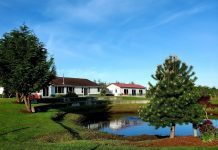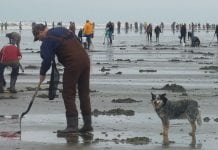Submitted by Steve Robinson for Quinault Indian Nation
The Exploration Vessel (E/V) Nautilus will be exploring the Quinault Canyon seafloor August 21 through September 3.
No, this is not the fictional submarine piloted by Captain Nemo in “Twenty Thousand Leagues Under the Sea,” a novel by Jules Verne. This Nautilus is very real, and you will be able to get a close up view of the scientific research its crew and captain will be conducting to enhance understanding of our coastal ecosystems on your computer.

This Nautilus is, in fact, considered by many to be one of the greatest ocean exploration ships in the world. It is a 211 foot scientific research ship captained by Dr. Robert “Bob” Ballard, who is considered one of the greatest modern explorers of the world’s oceans. He is well known for discovering the resting places of the RMS Titanic in 1985, the battleship Bismark in 1989 and many other lost vessels. Though known primarily for finding shipwrecks his exploration of the seas only begins there. In 2008, Dr. Ballard created the Ocean Exploration Trust (OET) with a goal of making the ocean accessible to anyone with an internet hookup while conducting scientific expeditions. The E/V Nautilus is the flagship of the OET.
Dr. Ballard and his “Corps of Exploration” will be mapping the terrain of the ocean floor, determining habitat types, sampling for Harmful Algal Blooms, checking oxygen levels, investigating ocean acidification and exploring whatever else they find. Importantly they will, for the first time, be able to see and map the habitats that support many of Quinault Indian Nation’s treaty fisheries.

Anyone can see what the Nautilus is doing around the clock by going to the Nautilus Live website. This August people in Taholah and other communities will have an opportunity to talk directly with onboard scientists and staff via video link while they’re investigating one of the last unexplored areas of the U.S. west coast.
The Nautilus has two Remotely Operated Vehicles (ROVs), an onboard laboratory, a large control room for running the ROVs and can berth 48 people. Very few ships anywhere have the “telepresence” ability of the E/V Nautilus.
Anyone with satellite TV knows how important it is to aim the antenna directly at the satellite or you lose picture. The Nautilus transmits real-time video from its ROVs and control room directly to a satellite and on to your computers while it is bouncing on the ocean. The Nautilus Live website also has links to videos and pictures from past expeditions many of which are truly amazing.

“Quinault Nation is very pleased to be associated with this project,” said President Sharp. Our Marine Resources Scientist will be managing our coordination with the ship, and using the research in his research in the Quinault Treaty Area,” she said.
She added that there is strong evidence it has been ocean conditions caused by climate change which has caused diminished returns of salmon to coastal rivers.
“It is one of our top goals to restore our salmon, especially the Blueback, a Sockeye subspecies unique to our Quinault River,” said Sharp. “Quinault Nation has been working hard to assure salmon have a good home to come back to in our rivers. It’s just as important for them to have favorable conditions when they are in their ocean voyage stage. This kind of research is an important part of that effort, and we greatly appreciate the work the scientists are doing,” she said.











































